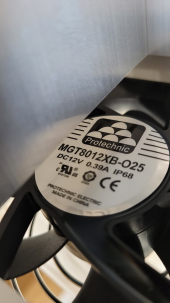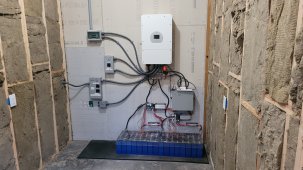kid744
New Member
I got to travel to where my inverter is stored and took a pic of the fan model number.
Since I now know they are 12vdc, I can use a pc supply to test the noise level and compare to possible replacements.
I can do this before I mount the unit to get an idea what approach to take. Also looks like an adapter (80mm to 120mm) could be used to allow120 mm fans. (should be much quieter))
Kid
Since I now know they are 12vdc, I can use a pc supply to test the noise level and compare to possible replacements.
I can do this before I mount the unit to get an idea what approach to take. Also looks like an adapter (80mm to 120mm) could be used to allow120 mm fans. (should be much quieter))

Kid



